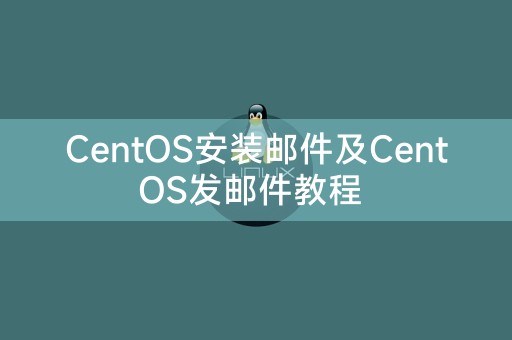Home >System Tutorial >LINUX >CentOS installation email and CentOS email sending tutorial
CentOS installation email and CentOS email sending tutorial
- WBOYWBOYWBOYWBOYWBOYWBOYWBOYWBOYWBOYWBOYWBOYWBOYWBforward
- 2024-02-09 19:03:391640browse
php editor Xinyi today brings you an article about CentOS installation emails and CentOS email sending tutorials. In daily work and life, email is used very frequently, so learning to install email services and send emails in CentOS systems is a very practical skill. This article will introduce in detail how to install the mail service in the CentOS system, and provide detailed tutorials on sending emails on CentOS. I hope it can help everyone.

Installing the mail service on CentOS requires the use of two software packages, Postfix and Dovecot. Postfix is a mail transfer agent (MTA) responsible for sending and receiving mail, while Dovecot is a Mail transfer agent (MTA), responsible for storing and accessing mail.
1. Install Postfix:
Execute the following command in the terminal to install Postfix:
sudo yum install postfix
2. Configure Postfix:
Open the main configuration file of Postfix:
sudo vi /etc/postfix/main.cf
Modify the following parameters:
myhostname = yourdomain.com
mydomain = yourdomain.com
myorigin = $mydomain
inet_interfaces = all
mydestination = $myhostname, localhost.$mydomain, localhost, $mydomain
mynetworks = 127.0.0.0/8
home_mailbox = Maildir/
Save and close the file.
3. Start Postfix:
Execute the following command to start Postfix:
sudo systemctl start postfix
and set it to start at boot:
sudo systemctl enable postfix
4. Install Dovecot:
Execute the following command in the terminal to install Dovecot:
sudo yum install dovecot
5 . Configure Dovecot:
Open Dovecot’s main configuration file:
sudo vi /etc/dovecot/dovecot.conf
protocols = imap pop3
mail_location = maildir:~/Maildir
6. Start Dovecot:
Execute the following command to start Dovecot:
sudo systemctl start dovecot
sudo systemctl enable dovecot
There are many ways to send emails on CentOS, including using command line tools and using SMTP libraries in programming languages. The following are two common methods:
1. Using command line tools:
CentOS provides the email sending tool sendmail. You can use the following command to send emails:
echo "This is the body of the email" | mail -s "This is the subject" recipient@example. com
Replace "recipient@example.com" in the above command with the actual recipient's email address, "This is the subject" with the email subject, and "This is the body of the email" is the body content of the email.
2. Use the SMTP library of the programming language:
If you need to send emails in your own application, you can use the SMTP library of the programming language, such as Python's smtplib library. The following is a simple Python script example:
import smtplib
from email.mime.text import MIMEText
sender = "sender@example.com"
recipient = "recipient@example.com"
subject = "This is the subject"
body = "This is the body of the email"
msg = MIMEText(body)
msg['Subject'] = subject
msg['From'] = sender
msg['To'] = recipient
smtp_server = "smtp.example.com"
smtp_port = 587
smtp_username = "username"
smtp_password = "password"
smtp = smtplib.SMTP( smtp_server, smtp_port)
smtp.starttls()
smtp.login(smtp_username, smtp_password)
smtp.sendmail(sender, recipient, msg.as_string())
smtp.quit()
Replace the relevant parameters in the above code with the actual sender, recipient, subject, body content and SMTP server information.
Installing the mail service and sending emails on CentOS is a very important part of server management. Through the introduction of this article, you can easily install the mail service on CentOS and use SMTP with command line tools or programming languages. Library sends emails, which will help you with email communication and notifications in server administration.
The above is the detailed content of CentOS installation email and CentOS email sending tutorial. For more information, please follow other related articles on the PHP Chinese website!

